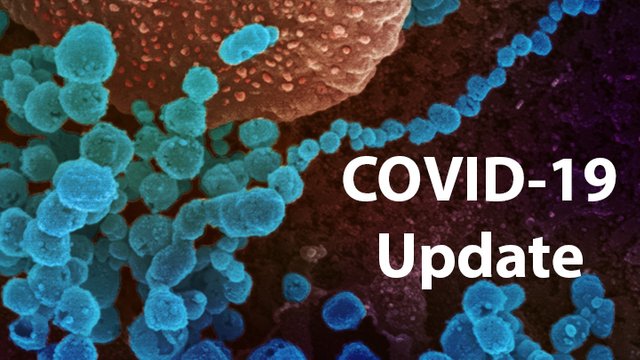The proximal origin of SARS-CoV-2

Since the primary reports of novel respiratory disease (COVID-19) in Wuhan, Hubei province, China 1,2 , there has been considerable discussion on the origin of the motive virus, SARS-CoV-2 three (also stated as HCoV-19) four . Infections with SARS-CoV-2 are currently widespread, and as of eleven March 2020, 121,564 cases are confirmed in additional than a hundred and ten countries, with 4,373 deaths five . SARS-CoV-2 is that the seventh coronavirus famed to infect humans; SARS-CoV, MERS-CoV and SARS-CoV-2 will cause severe disease, whereas HKU1, NL63, OC43 and 229E are related to delicate symptoms half-dozen . Here we have a tendency to review what may be deduced regarding the origin of SARS-CoV-2 from comparative analysis of genomic data. we provide a perspective on the notable options of the SARS-CoV-2 order and discuss situations by that they may have arisen. Our analyses clearly show that SARS-CoV-2 isn't a laboratory construct or a purposefully manipulated virus. Notable features of the SARS-CoV-2 genome Our comparison of alpha- and betacoronaviruses identifies 2 notable genomic features of SARS-CoV-2: (i) on the premise of structural studies 7–9 and organic chemistry experiments 1,9,10 , SARS-CoV-2 seems to be optimized for binding to the human receptor ACE2; and (ii) the spike protein of SARS-CoV-2 incorporates a useful polybasic (furin) cleavage web site at the S1–S2 boundary through the insertion of twelve nucleotides eight , that in addition junction rectifier to the expected acquisition of 3 O-linked glycans round the site. 1. Mutations within the receptor-binding domain of SARS-CoV-2 The receptor-binding domain (RBD) in the spike macromolecule is that the most variable a part of the coronavirus order 1,2 . Six RBD amino acids are shown to be crucial for binding to ACE2 receptors and for crucial the host vary of SARS-CoV-like viruses seven . With coordinates supported SARS-CoV, they're Y442, L472, N479, D480, T487 associated Y4911, that correspond to L455, F486, Q493, S494, N501 and Y505 in SARS-CoV-2 seven . 5 of those six residues disagree between SARS-CoV-2 and SARS-CoV (Fig. onea). On the premise of structural studies 7–9 and organic chemistry experiments 1,9,10 , SARS-CoV-2 appears to possess an RBD that binds with high affinity to ACE2 from humans, ferrets, cats and alternative species with high receptor similarity 7 . Fig. 1 options of the spike macromolecule in human SARS-CoV-2 and connected coronaviruses. a, Mutations in grips residues of the SARS-CoV-2 spike protein. The spike protein of SARS-CoV-2 (red bar at top) was aligned against the foremost closely connected SARS-CoV-like coronaviruses and SARS-CoV itself. Key residues within the spike macromolecule that build contact to the ACE2 receptor are marked with blue boxes in each SARS-CoV-2 and related viruses, together with SARS-CoV (Urbani strain). b, Acquisition of polybasic cleavage web site and O-linked glycans. each the polybasic cleavage site and therefore the 3 adjacent expected O-linked glycans are distinctive to SARS-CoV-2 and weren't antecedently seen in lineage B betacoronaviruses. Sequences shown are from NCBI GenBank, accession codes MN908947, MN996532, AY278741, KY417146 and MK211376. The scaly anteater coronavirus sequences are a agreement generated from SRR10168377 and SRR10168378 (NCBI BioProject PRJNA573298) 29,30 . whereas the analyses higher than recommend that SARS-CoV-2 could bind human ACE2 with high affinity, machine analyses predict that the interaction isn't ideal seven which the RBD sequence is completely different from those shown in SARS-CoV to be best for receptor binding 7,11 . Thus, the high-affinity binding of the SARS-CoV-2 spike macromolecule to human ACE2 is presumably the results of selection on an individual's or human-like ACE2 that allows another optimal binding resolution to arise. this is often sturdy proof that SARS-CoV-2 is not the merchandise of purposeful manipulation. 2. Polybasic furin cleavage web site and O-linked glycans The second notable feature of SARS-CoV-2 may be a polybasic cleavage web site (RRAR) at the junction of S1 and S2, the 2 subunits of the spike eight (Fig. 1b). this enables effective cleavage by furin and alternative proteases and incorporates a role in crucial infective agent infectivity and host vary twelve . In addition, a number one amino acid is additionally inserted at this site in SARS-CoV-2; thus, the inserted sequence is PRRA (Fig. 1b). The flip created by the proline is expected to lead to the addition of O-linked glycans to S673, T678 and S686, that flank the cleavage site and are distinctive to SARS-CoV-2 (Fig. 1b). Polybasic cleavage web sites haven't been determined in connected ‘lineage B’ betacoronaviruses, though alternative human betacoronaviruses, together with HKU1 (lineage A), have those sites and expected O-linked glycans thirteen . Given the extent of genetic variation within the spike, it's probably that SARS-CoV-2-like viruses